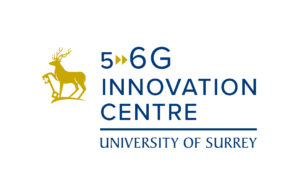As part of the government-backed 5G VISTA programme, Surrey’s 5G/6GIC is devising new ways of connecting to enable enhanced viewing experiences direct to users’ mobile devices.
When thousands of users need to connect to a single source of content – such as to see multi-angle views of the action at a live sporting event – this presents technical challenges in terms of quality of service, network flooding and maintaining security.
The University’s 5G/6G Innovation Centre (5G/6GIC), part of the Institute for Communication Systems (ICS), is bringing its expertise in mobile and satellite communications to develop and test a lightweight security system, DTLS (Datagram Transport Layer Security) within the 5G VISTA project. This technology will not only address the challenge of stadia broadcasts, but also help to gear up for a future in which almost all communications are streamed.
5G VISTA (Video in Stadia Technical Architecture), which runs until March 2022, aims to transform how fans experience live events, using 5G broadcast technology to deliver exciting new ways of engaging with events straight to their mobile device. A major milestone of the project will be a live football match at the MK Dons football stadium on 12 February when the 5G VISTA app will be trialled, allowing fans to view multiple, high quality livestreams of different perspectives of the game.
Along with Surrey (as the only academic partner), the 5G VISTA consortium includes leading broadcast and telecom partners DTG, Virgin Media O2, Rohde & Schwarz Ateme, Digital Catapult, GWS, Imaginary Pictures and Ori Industries.
Surrey’s specific role within 5G VISTA is to enable and test secure connections – between the streaming server/camera and multicast equipment provided by Rohde & Schwarz, and between the content provider and multiple mobile devices – on the 5G testbed. The testbed is now unique in the UK in offering broadcast capability and will provide a vital resource for testing future applications.
Dr Haitham Cruickshank, leading the project within 5G/6GIC, said: “While 5G VISTA focuses on stadia events, secure multicasting and DTLS will have uses at other large-scale events such as Formula 1 races. The technology could also be applied in emergency communications such as when an earthquake occurs and destroys infrastructure, where a secure multicast capability would enable first responders to communicate in a secure and timely way.
“Multicasting could be the future, as normal television disappears. The users will stream everything via the mobile network rather than a separate broadcast network. With our expertise in satellites and the broadcast capability we have introduced to Surrey’s 5G testbed, the ICS is well-placed to help the UK capitalise on this exciting next chapter in communications.”
